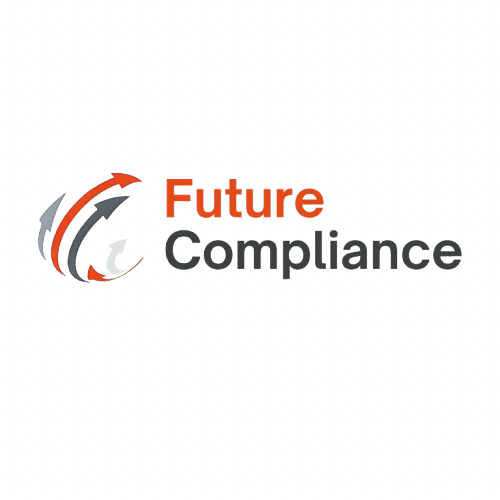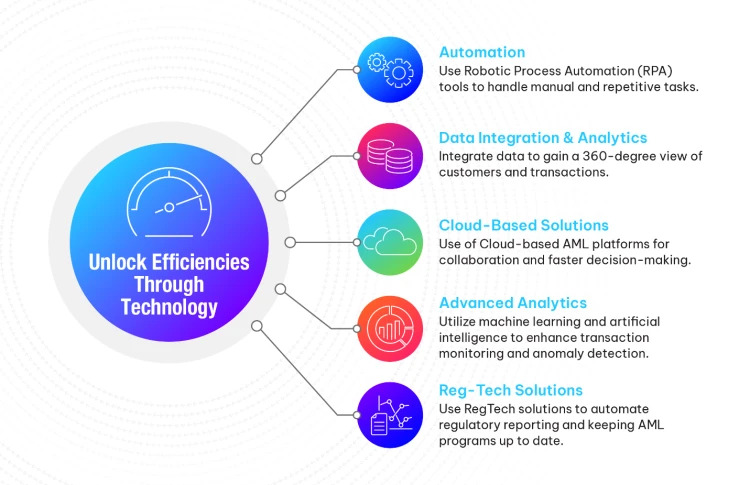In today’s world, proliferation financing (‘PF’) is a growing global threat that fuels the spread of WMD programs. It involves raising and making available funds, assets, and other economic resources to dangerous entities. These groups engage in the development, manufacture, and export of nuclear, chemical, and biological weapons. Countries like North Korea and Iran remain under Targeted Financial Sanctions (‘TFS’) due to their ongoing acquisition and stockpiling of proliferation-sensitive materials. Criminal networks disguise the funds through money laundering, making it harder to stop illegal transfers.
To operate, these groups misuse Dual-Use technologies and exploit DNFBPs (Designated Non-Financial Businesses and Professions). They use them for brokering, transport, and trans-shipment of related materials. The process happens in stages, starting with program fundraising, followed by concealing transactions, and ending in the proliferation of their means of delivery. The use of these materials for non-legitimate purposes threatens global society and security. Because their tactics keep evolving, stopping proliferation financing requires strong regulations and global cooperation.
Proliferation Financing Risk: A Looming Global Danger
The proliferation financing risk is a serious threat that fuels the spread of WMD. To fight this, DNFBPs must assess risks and adopt strong measures for mitigation. Any breach, evasion, or non-implementation of TFS obligations weakens financial security. That is why the United Nations Security Council Resolutions focus on prevention, suppression, and disruption of illegal financing tied to proliferation. Without strict regulations, these risks will continue to grow.
PF Risk Assessment: A Critical Pillar of AML/CFT Policy
To effectively assess PF risk, DNFBPs must first understand the following key aspects:
The Alarming Threats of Proliferation Financing
The risk of Proliferation Financing (PF threats) is increasing as criminal entities continue to exploit financial systems. It is widely assumed that terrorist groups and rogue countries, such as North Korea and Iran, seek nuclear weapons and radiological materials. A breach in financial regulations or a failure to implement strict TFS controls allows these actors to evade detection. This ongoing risk poses a serious threat to global peace and security.
Hidden Vulnerabilities That Fuel Proliferation Financing
Different sectors face vulnerabilities that make them attractive to illegal financing. Weak DNFBPs oversight, gaps in banking and insurance, and unregulated virtual assets facilitate hidden transactions. Additionally, money transfer services in high-risk jurisdictions, like Iran, allow evasion and non-implementation of TFS measures. To reduce these risks, UAE authorities rely on international reports and PF typologies to identify weak points. Sectoral reports further assess risks within various business structures and financial products.
Devastating Consequences of Proliferation Financing
Weak financial controls have serious consequences, enabling proliferators to procure dangerous materials for developing illicit biological weapon systems and other destructive tools. Misused funds and assets contribute to the rise of WMD, increasing the threat of their use. If left unchecked, these systems could cause devastating global instability.
Proliferation Finance Risk Assessment: A Critical Shield
To fight PF risk, DNFBPs must clearly understand their exposure and apply a structured assessment process. Their approach should match the nature and size of their business, ensuring proper risk management. A well-documented PF risk assessment should classify threats into key categories and highlight vulnerabilities. Keeping an updated document helps organizations strengthen compliance and prevent financial misuse.
Geographic Hotspots That Drive Proliferation Financing
Detecting geographic risk is crucial to stopping PF risk, as criminals use hidden global networks to move money illegally. North Korea and Iran rely on neighbouring countries and indirect routes to acquire proliferation materials. DNFBPs must assess their business locations and target markets to prevent illegal financial activity. If left unchecked, these risks can benefit terrorist groups and fund dangerous operations.
High-Risk Customers in Proliferation Financing
Understanding customer risk helps stop illicit transactions. DNFBPs should screen UN-sanctioned individuals and entities listed on the TFS list. Identifying the UBO of companies involved in proliferation-sensitive goods is critical. The CDD process should review a client’s business place, residence, and geographic connections. If a sanctioned person engages in suspicious customer business activities, financial institutions must act quickly to reduce PF risk.
Weaknesses in Products and Services That Enable Proliferation Financing
Financial services and products can be exploited to fund WMD activities. Institutions should assess how their services may be used to disguise transactions or obtain proliferation-sensitive goods. DNFBPs must apply strict risk controls to stop criminals from misusing funds for proliferation financing. Strong oversight prevents illegal networks from taking advantage of financial loopholes.
Effective Strategies to Prevent and Reduce Proliferation Financing Risk
- DNFBPs should identify and monitor high-PF risk customers, especially those linked to high-risk jurisdictions like Iran and North Korea.
- Conduct Enhanced Due Diligence (‘EDD’) on customers categorized as sanctioned or involved in proliferation financing to detect suspicious activities.
- Always check and inquire about the TFS policy of clients to ensure compliance with financial regulations.
- Secure approval from senior management before processing any business transaction with listed high-risk customers.
- Establish a strict policy to restrict dealings with customers from high-risk jurisdictions to prevent illegal financial activities.
- If a possible PF activity is envisaged in a transaction, freeze the funds and report it immediately using the goAML Portal.
- Verify the ultimate beneficial owner of an entity to prevent financial misuse or illegal trade of goods.
- Watch for red flags, such as unknown end users or unclear business dealings, that may indicate financial crimes.
Sanction Evasion and PF Red Flags
- Dealings with sanctioned countries, territories, or sanctioned persons through a DNFBP’s client can indicate illegal financial activity.
- The use of shell companies to move funds locally and internationally often leads to misappropriating the commercial sector for unlawful purposes.
- Transactions involving sanctioned goods or Dual-Use goods should be carefully reviewed to prevent illegal trade.
- Fake or altered identifying documents, such as a bill of lading or sales purchase agreement, may be forged, counterfeited, or tampered with.
- If there is no apparent explanation for document changes in international trade, further investigation is necessary.
- A financed activity that does not match the original purpose or intended purpose of the entity could signal fraud.
- Companies importing high-end technology devices without the proper trade license raise serious concerns.
- A non-profit organization exporting communication devices instead of offering humanitarian aid may be engaged in illicit activities.
- Complex commercial deals or business deals designed to hide the final destiny of a transaction or good may indicate sanction evasion.
- Complex legal entities and arrangements created to obscure the beneficial owner should always be examined for suspicious activity.
Critical Insights from the EOCN Survey on Global Security and Proliferation Control
The Executive Office for Control & Non-Proliferation (‘EOCN’) conducted a survey to measure awareness of Proliferation Financing, TFS, and Sanctions Evasion Techniques among reporting entities in the UAE. This survey helped assess DNFBPs’ understanding of PF-risk mitigation, compliance status, and risk assessment. It focused on key areas such as:
- How businesses detect red flags linked to PF risk and financial crimes.
- When to freeze funds in suspicious circumstances to prevent illegal transactions.
- The need for screening high-risk customers and associated parties to spot possible proliferators.
- How DNFBPs should follow PF guidelines and implement policies to stop financial crime.
- The role of a Compliance Officer in preventing evasion of sanctions.
- The value of trainings on UNSC sanctions and financial security measures.
These insights will help authorities improve regulations and ensure reporting entities follow strict compliance standards.
AML UAE: Your Trusted Financial Shield
To meet UAE authorities and United Nations Security Council regulations, DNFBPs must have a clear PF policy to detect and mitigate proliferation financing risks. This policy should be integrated with the AML/CFT Policy to enhance financial security. Businesses should assess their existing policy, follow a structured risk assessment process, and align with UAE requirements and international requirements. A strong understanding of these obligations helps prevent financial crimes and ensures compliance with global standards.
FAQs:
1. What is a PF policy, and why is it important?
A PF policy helps detect and mitigate risks related to proliferation financing. It ensures businesses comply with UAE authorities and United Nations Security Council regulations.
2. How does a PF policy connect to AML/CFT Policy?
A PF policy should be integrated with the AML/CFT Policy to strengthen financial security and prevent illegal financial activities.
3. Who is required to implement a PF policy?
All DNFBPs must follow a PF policy to meet UAE requirements and international requirements, ensuring compliance with financial regulations.
4. What is the purpose of a risk assessment process?
The risk assessment process helps businesses identify and evaluate proliferation financing risks, making it easier to implement preventive measures.
5. How can businesses ensure their PF policy meets compliance standards?
Companies should assess their existing policy, update their procedures, and align them with UAE requirements and global financial laws.
6. What are the consequences of non-compliance?
Failure to follow PF policy regulations can lead to fines, legal action, and reputational damage, affecting business operations.
7. How can businesses stay informed about PF regulations?
Companies should review their PF policy, attend training, and stay updated on United Nations Security Council financial crime regulations.



